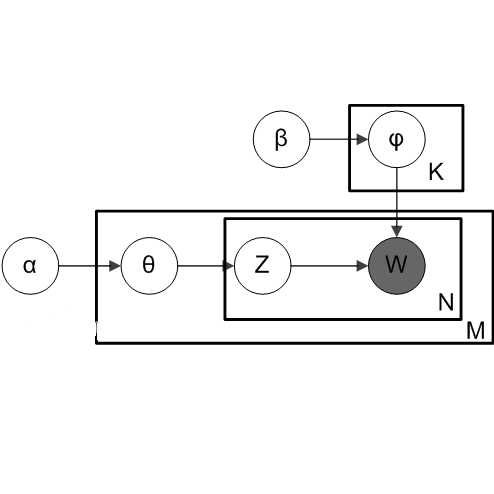Processing sequential multi-sensor data becomes important in many tasks due to the dramatic increase in the availability of sensors that can acquire sequential data over time. Human Activity Recognition (HAR) is one of the fields which are actively benefiting from this availability. Unlike most of the approaches addressing HAR by considering predefined activity classes, this paper proposes a novel approach to discover the latent HAR patterns in sequential data. To this end, we employed Latent Dirichlet Allocation (LDA), which is initially a topic modelling approach used in text analysis. To make the data suitable for LDA, we extract the so-called "sensory words" from the sequential data. We carried out experiments on a challenging HAR dataset, demonstrating that LDA is capable of uncovering underlying structures in sequential data, which provide a human-understandable representation of the data. The extrinsic evaluations reveal that LDA is capable of accurately clustering HAR data sequences compared to the labelled activities.
翻译:连续处理多传感器数据在许多任务中变得十分重要,因为随着时间推移,能够获取连续数据的传感器的可用性急剧增加。人类活动识别(HAR)是积极受益于这一可用性的领域之一。与大多数通过考虑预先界定的活动类别处理HAR的方法不同,本文件提出了在连续数据中发现潜在的HAR模式的新办法。为此,我们采用了Lenttent Dirichlet分配(LDA)(LDA) (LDA) (LDA) (LDA) (LDA) (LDA) (LDA) (LDA) (LDA) (LDA) (LDA) (LDA) (LDA (LDA) ) (LDA) (LDA (LDA) ) (LDA (LDA) (LDA) (LDA) (LDA (LDA) (LDA) (LDA (LDA) (LDA) (S) (S) (SDA) (S) (SDA) (S) (SDADADADA) (S) (S) (S) (S) (SDA) (S) (S) (S) (S) (S) (S) (S) (SDA) (SDADA) (S) (S) (S) (SDADA (S) (S) (S) (S) (S) (S) (S) (S) (S) (S) (S) (S) (S (S) (S) (S) (S) (S) (S) (S) (S) (S) (S) (S) (S) (S) (S) (S) (S) (S) (S) (S) (S) (S) (S) (S) (S) (A) (S) (S) (S) (S) (S) (A) (A) (IDA)



